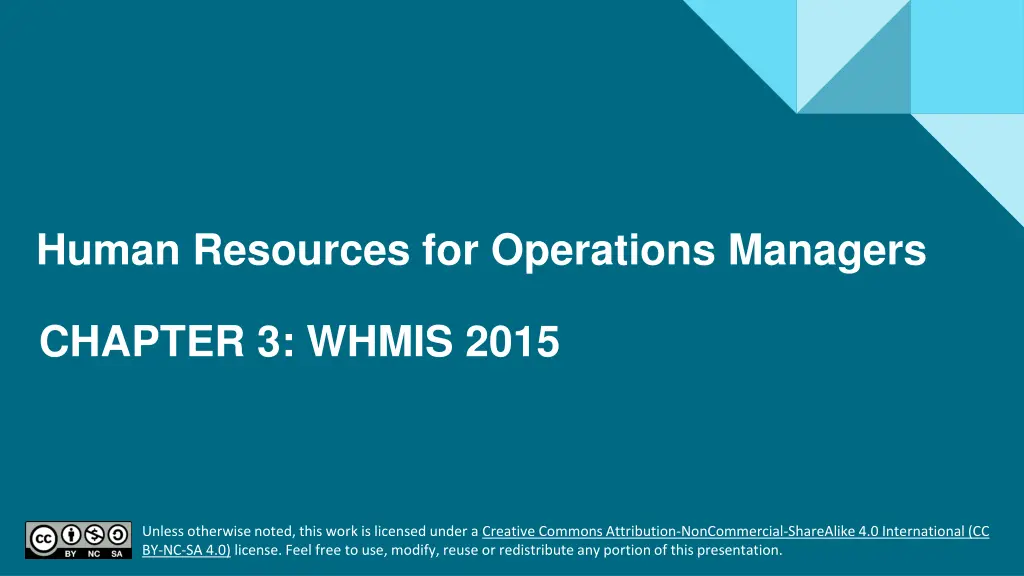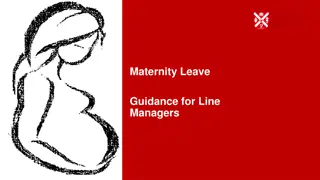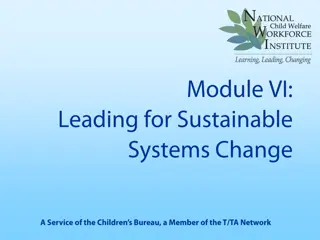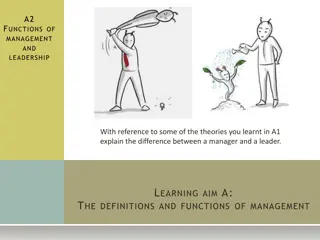
Understanding WHMIS 2015 for Workplace Safety
Learn about WHMIS 2015, a vital system designed to safeguard workers from hazardous materials exposure in the workplace. Explore key elements, hazard groups, entry routes, and roles and responsibilities to ensure comprehensive workplace safety compliance.
Download Presentation

Please find below an Image/Link to download the presentation.
The content on the website is provided AS IS for your information and personal use only. It may not be sold, licensed, or shared on other websites without obtaining consent from the author. If you encounter any issues during the download, it is possible that the publisher has removed the file from their server.
You are allowed to download the files provided on this website for personal or commercial use, subject to the condition that they are used lawfully. All files are the property of their respective owners.
The content on the website is provided AS IS for your information and personal use only. It may not be sold, licensed, or shared on other websites without obtaining consent from the author.
E N D
Presentation Transcript
Human Resources for Operations Managers CHAPTER 3: WHMIS 2015 Unless otherwise noted, this work is licensed under a Creative Commons Attribution-NonCommercial-ShareAlike 4.0 International (CC BY-NC-SA 4.0) license. Feel free to use, modify, reuse or redistribute any portion of this presentation.
Learning Outcomes Upon successful completion of this chapter, you will be able to: Explain the three elements that make up WHMIS 2015. Identify the pictograms associated with product labels. Describe the difference between a workplace label and a supplier label.
3.1 An Introduction To WHMIS 2015 WHMIS, or the Workplace Hazardous Materials Information System, is designed to protect workers from the health effects of exposure to hazardous products. As part of the workplace safety program, employers are responsible for ensuring their workers are protected from hazardous products, previously referred to as controlled products.
3.2 Hazards Groups, Classes, And Categories Within WHMIS 2015, there are two types of hazard groups; physical and health hazards. Additionally, these two hazard groups are further broken down into hazard classes and hazard categories.
3.3 The Three Elements Of WHMIS 2015 There are three essential elements that make up WHMIS 2015. Labels Safety Data Sheets (SDS) Education and Training
3.4 Routes Of Entry Workers may not think about the ways in which a hazardous product could enter their body. There are four routes of entry: inhalation, ingestion, absorption, and injection.
3.5 Roles And Responsibilities I The Supplier The supplier is responsible for correctly categorizing the product they supply to the customer, and if it is found to be a hazardous material, the supplier must attach a supplier label to the product and provide the customer with a Safety Data Sheet (SDS).
3.5 Roles And Responsibilities II The Employer As with most safety legislation, the employer has specific requirements under WHMIS 2015. If a hazardous product is used in the workplace, the employer is required to: Educate and train workers on the hazards and safe use of products. Ensure that hazardous products are properly labelled. Prepare workplace labels, as needed. Prepare SDSs, as necessary (e.g., if an employer manufactures a hazardous product that is used on-site). Provide access to up-to-date SDSs to workers. Ensure appropriate control measures are in place to protect the health and safety of workers.
3.5 Roles And Responsibilities III The Employee As workers are part of the Internal Responsibility System (IRS), they have responsibilities under WHMIS 2015. Some of the workers responsibilities include participating in training sessions, wearing the provided personal protective equipment when working with hazardous products and reporting any containers that are missing labels to their supervisor.
3.6 Transportation Of Dangerous Goods Specific legislation, know as the Transportation of Dangerous Goods Act is designed to address the movement of dangerous goods from one location to another. As stated by the Canadian Centre for Occupational Health and Safety (CCOHS), The purpose of the Transportation of Dangerous Goods (TDG) Act and Regulations is to promote public safety when dangerous goods are being handled, offered for transport or transported by road, rail, air, or water (marine).
3.7 Key Takeaways If an employer is to ensure an employee s right to know as describe in occupational health and safety legislation, WHMIS 2015 knowledge is an important part of that responsibility. An employee must be informed of the hazardous products they are working with, how to handle them, the PPE to be worn around them, how to store them, and the first aid to be administered in case of a workplace incident. WHMIS 2015 must be a part of every new employee onboarding session and part of every employee s ongoing safety training.






















